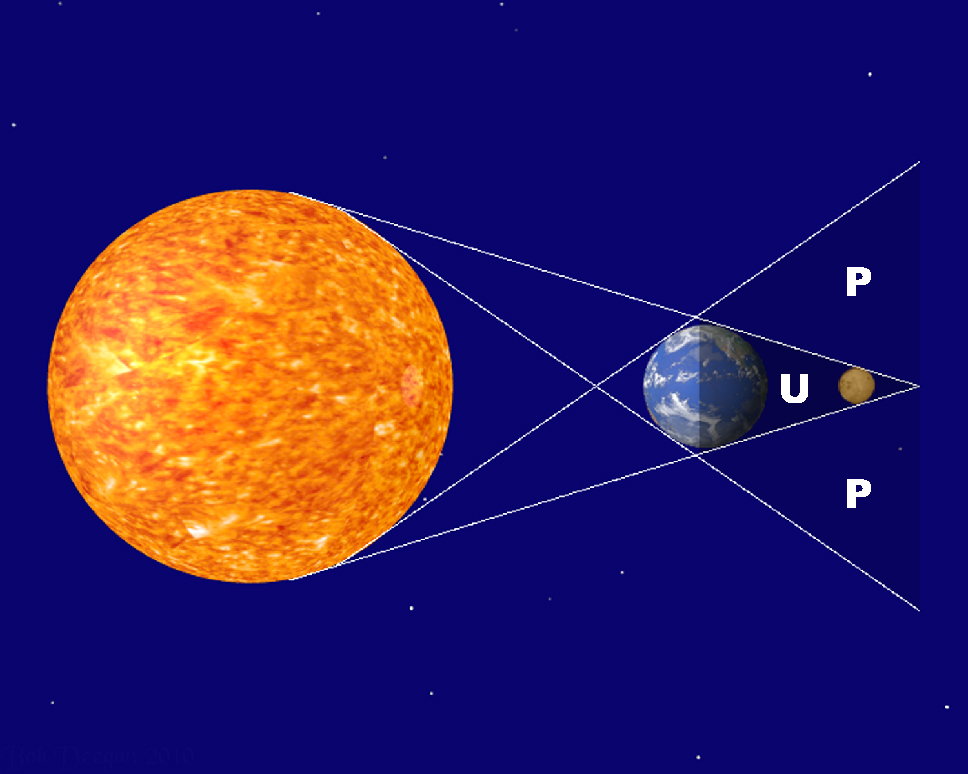
A Lunar Eclipse

A lunar eclipse happens when the Earth crosses between the Moon and Sun. The shadow cast by the Earth slowly envelops the Moon and causes the eclipse. Because the Moon orbits the Earth on a slight angle, this intersection doesn’t happen very often. The shadow of an eclipse fall into one of two categories -- penumbral and umbral. Although this diagram is not to scale, it will help to explain the difference between them.
Our diagram shows the Sun as a very large light source and the Earth as a blockading body preventing light from reaching the Moon. We can imagine that the thin lines extending from the top and bottom of the Sun represent the directions followed and limits of that sunlight.
Penumbra: The penumbra is a lighter shadow caused when the movement of the Earth blocks some, but not all, direct sunlight from reaching the Moon. If the Moon were in one of the areas marked “P” in our diagram, it would receive light from a portion of the Sun, but the Earth would block light coming from the other portion.
Umbra: In the case of the darker umbral shadow, if the Moon were in the area marked “U” in our diagram, the blockading Earth would prevent any direct light coming from the Sun.
Lunar eclipses can be total, meaning that the whole of the Moon will come inside the dark umbral shadow, partial, in which some of the Moon will be inside the umbral shadow, or they can be penumbral, when the Moon receives no umbral shadow at all, but is slightly darkened by a penumbral shadow.
Unless otherwise indicated, all content of this web site is the copyright of Robert Deegan and all rights are reserved.
For more information, or to comment, please contact: Bob@NightSkies.org